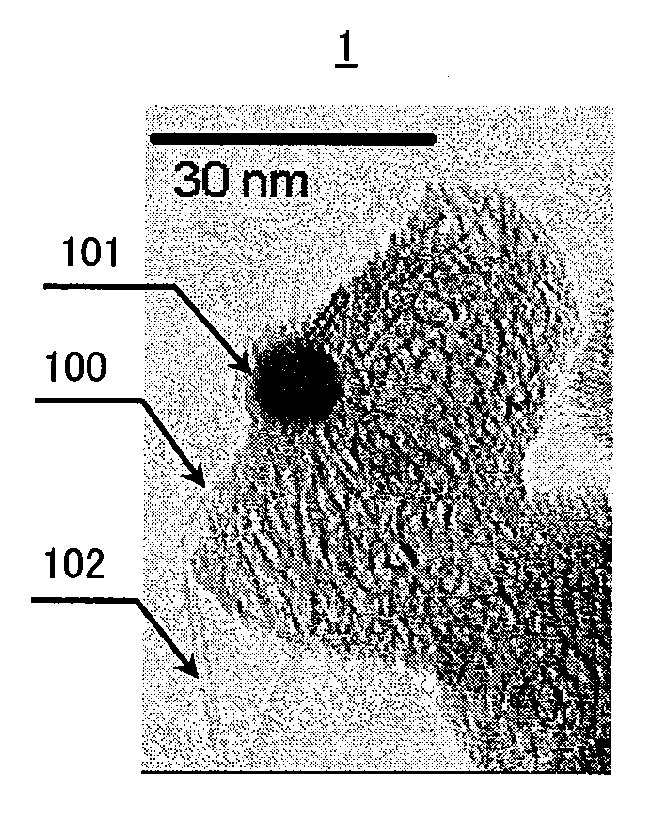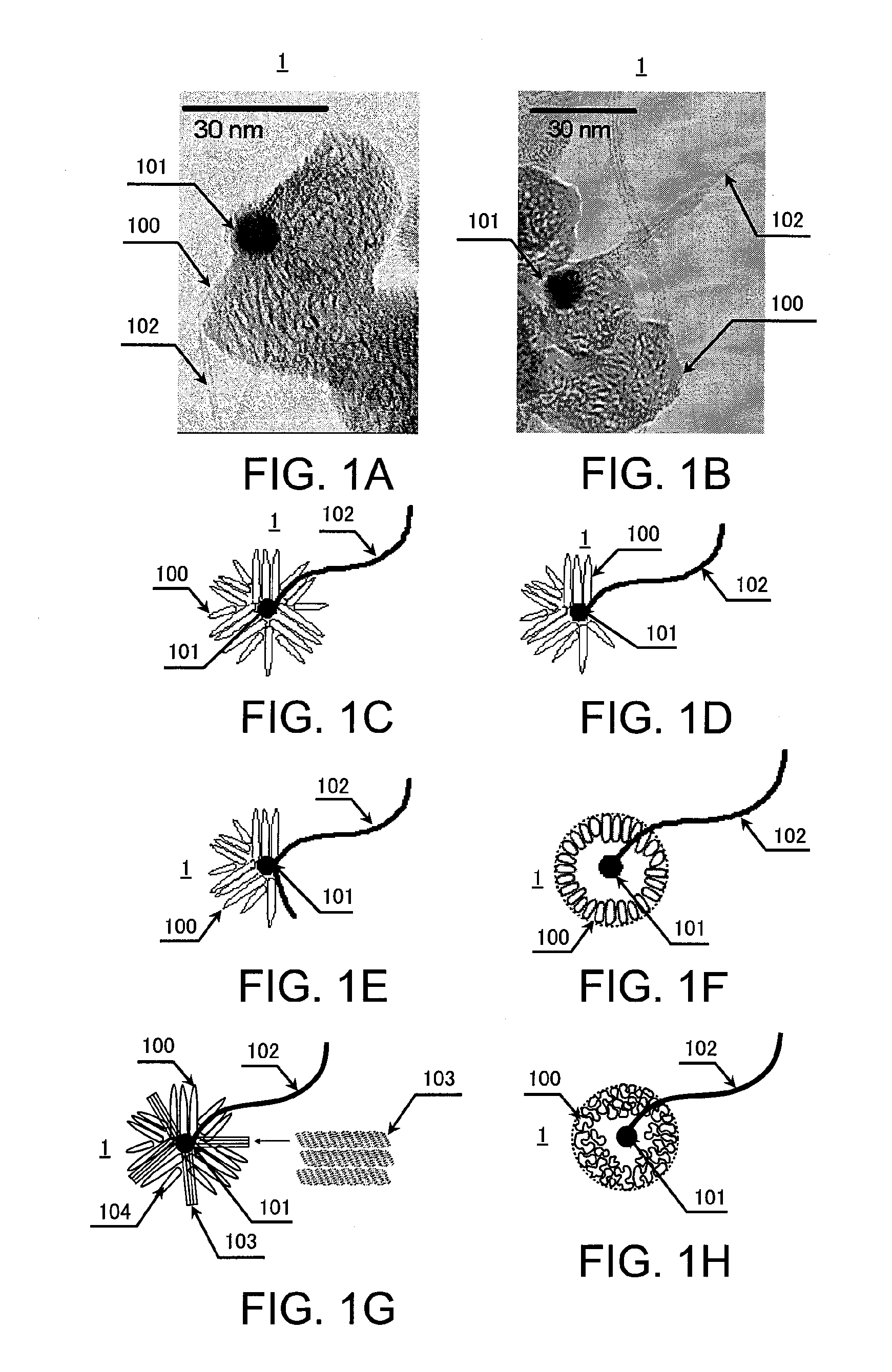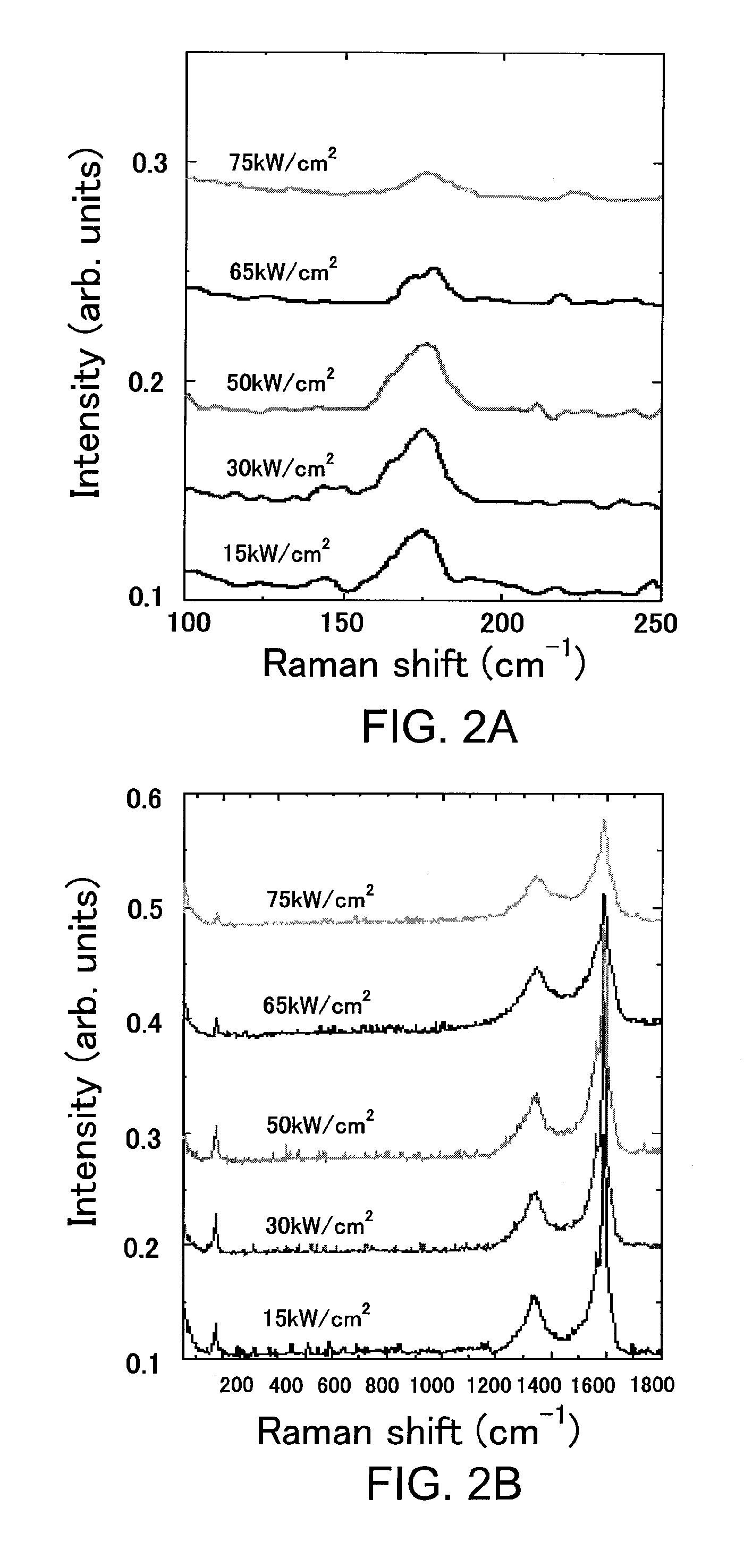Nanotube-nanohorn complex and method of manufacturing the same
a technology of nanotubes and nanohorns, applied in the field of nanotubes and nanohorn complexes, can solve the problems of low crystallinity, and achieve the effects of high aspect ratio, high dispersibility, and high durability
- Summary
- Abstract
- Description
- Claims
- Application Information
AI Technical Summary
Benefits of technology
Problems solved by technology
Method used
Image
Examples
example 1
[0068]A carbon target containing a catalyst was evaporated under a constant gas pressure by a laser ablation method while a laser output was varied. Thus, nanotube-nanohorn complexes 1 were produced by way of trial. The following specific steps were performed.
[0069]First, a carbon target containing a catalyst having a diameter of 2.5 cm and a length of 10 cm was placed in a chamber. An inert gas of Ar was supplied so that a gas pressure was 150 Torr (200×102 Pa). The interior of the chamber was held at a room temperature. A flow rate of Ar was set to be 10 L / min. The target containing a catalyst included Co at 0.6 atomic % and Ni at 0.6 atomic %. A target rotation mechanism was provided within the chamber so that a laser beam could continuously be emitted, and was adjusted so that a uniform target surface was produced at the time of continuous emission.
[0070]Then the target containing a catalyst was irradiated with a CO2 laser while the output of the CO2 laser was set to be 15 kW / cm...
example 2
[0074]Under the same conditions as in Example 1 except for a constant laser output (50 kW / cm2) and a varying pressure of Ar, nanotube-nanohorn complexes were produced by way of trial. Measurement of the Raman spectrum of the obtained samples and observation of surfaces of the obtained samples were conducted.
[0075]FIGS. 4A and 4B show the results of the Raman spectrum, FIGS. 5A to 6B show the results of the surface observation.
[0076]It can be seen from FIG. 4A that the RBM was reduced as the pressure was increased from 150 Torr (200×102 Pa) to 760 Torr (1013×102 Pa). Therefore, it can be seen that the amount of a single layer carbon nanotube was reduced. Furthermore, a G / D ratio of FIG. 4B was also deteriorated, exhibiting the same tendency as the RBM results.
[0077]FIGS. 5A and 5B are diagrams simulating transmission electron microscope photographs of samples produced under conditions in which an Ar pressure was 500 Torr (667×102 Pa). It can be seen from those figures that most of th...
example 3
[0079]Under the same conditions as in Example 1 except that a catalyst had a different composition with a constant laser output (50 kW / cm2), Ar pressure (150 Torr (200×102 Pa)), and flow rate (10 L / min), nanotube-nanohorn complexes were produced by way of trial. Measurement of the Raman spectrum of the obtained samples was conducted.
[0080]FIGS. 7A and 7B show the results of the Raman spectrum.
[0081]It can be seen from FIGS. 7A and 7B that a large number of SWNTs (Single-Walled Carbon Nanotubes) were synthesized in a case where Co:Ni=1:1. Furthermore, it appears that carbon nanotubes were hardly synthesized with only Ni.
PUM
| Property | Measurement | Unit |
|---|---|---|
| diameter | aaaaa | aaaaa |
| diameter | aaaaa | aaaaa |
| diameter | aaaaa | aaaaa |
Abstract
Description
Claims
Application Information
 Login to View More
Login to View More - R&D
- Intellectual Property
- Life Sciences
- Materials
- Tech Scout
- Unparalleled Data Quality
- Higher Quality Content
- 60% Fewer Hallucinations
Browse by: Latest US Patents, China's latest patents, Technical Efficacy Thesaurus, Application Domain, Technology Topic, Popular Technical Reports.
© 2025 PatSnap. All rights reserved.Legal|Privacy policy|Modern Slavery Act Transparency Statement|Sitemap|About US| Contact US: help@patsnap.com



